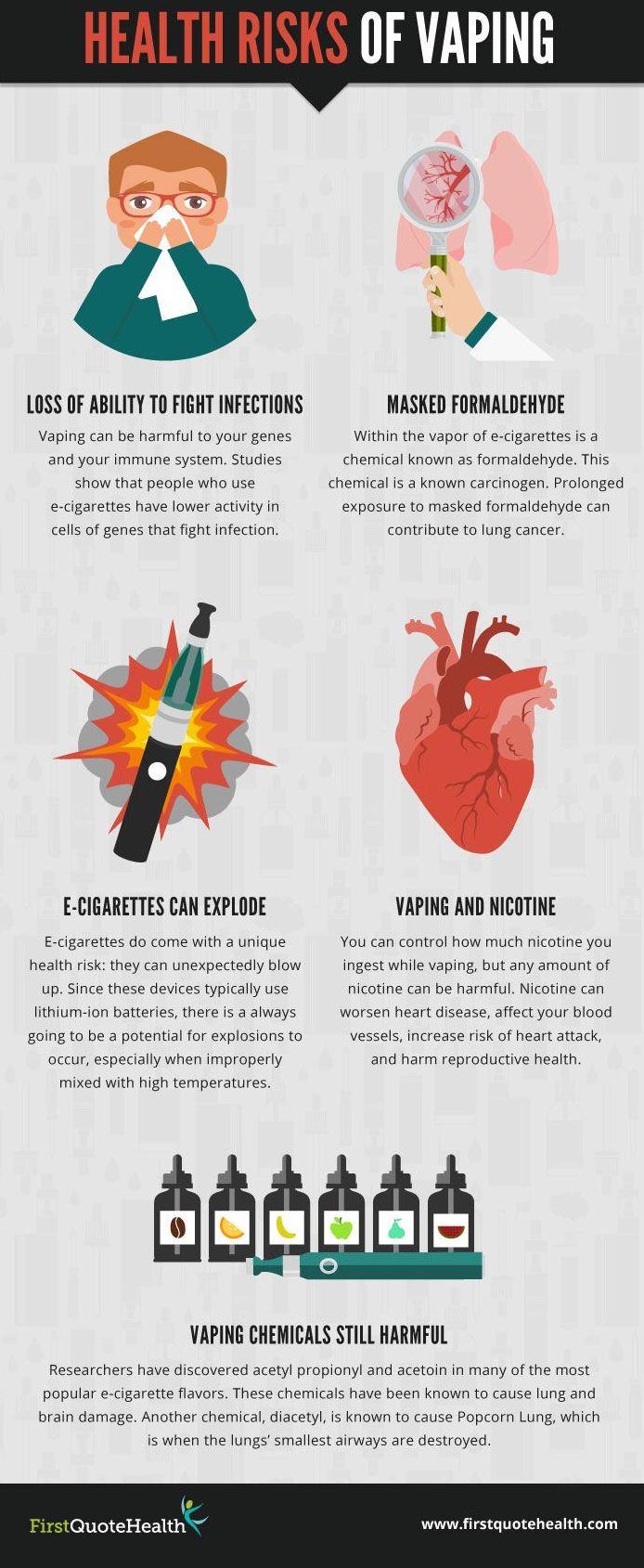Dangers of Vaping or E-Cigarettes
Why Is Nicotine Unsafe for Kids, Teens, and Young Adults?
- Most e-cigarettes contain nicotine—the addictive drug in regular cigarettes, cigars, and other tobacco products.
- Nicotine can harm the developing adolescent brain.1 The brain keeps developing until about age 25.
- Using nicotine in adolescence can harm the parts of the brain that control attention, learning, mood, and impulse control.1
- Each time a new memory is created or a new skill is learned, stronger connections – or synapses – are built between brain cells. Young people’s brains build synapses faster than adult brains. Nicotine changes the way these synapses are formed.
- Using nicotine in adolescence may also increase risk for future addiction to other drugs.1
What Are the Other Risks of E-cigarettes for Kids, Teens, and Young Adults?
- Scientists are still learning about the long-term health effects of e-cigarettes.
- Some of the ingredients in e-cigarette aerosol could also be harmful to the lungs in the long-term. For example, some e-cigarette flavorings may be safe to eat but not to inhale because the gut can process more substances than the lungs.1
- Defective e-cigarette batteries have caused some fires and explosions, a few of which have resulted in serious injuries.
- Children and adults have been poisoned by swallowing, breathing, or absorbing e-cigarette liquid through their skin or eyes.
- The e-cigarette aerosol that users breathe from the device and exhale can contain harmful and potentially harmful substances, including:
- Nicotine
- Ultrafine particles that can be inhaled deep into the lungs
- Flavoring such as diacetyl, a chemical linked to a serious lung disease
- Volatile organic compounds
- Cancer-causing chemicals
- Heavy metals such as nickel, tin, and lead1
- It is difficult for consumers to know what e-cigarette products contain. For example, some e-cigarettes marketed as containing zero percent nicotine have been found to contain nicotine.3
Quick Facts on the Risks of E-cigarettes for Kids, Teens, and Young Adults









